Here are scenes from another Tzotzil village called Zinacatan. They speak the same language as the CHAMULANS, but there are many differences in culture. Men take only 1 wife here, their church is still in good standing with the Vatican and resembles a traditional Catholic church slightly more. It has pews, there are no healing chicken sacrifices performed by shaman, no candles melting into the floor, no pine needles covering the floor and no Zinacantecans inside. Their religious statues are adorned with thousands of flowers which cover every inch of the statues except the face and parts of the body. Bright & beautiful. Although their brand of Catholicism is more closely aligned with church teachings they are polytheistic like the Chamulans. and of course no cameras allowed inside.
The 2 indigenous groups are cordial to each other and occasionally there is intermarrying.
As in San Juan Chamula, our guide took us into a home where we got a better picture of daily life. We saw women weaving cloth, making tortillas, tending fires.
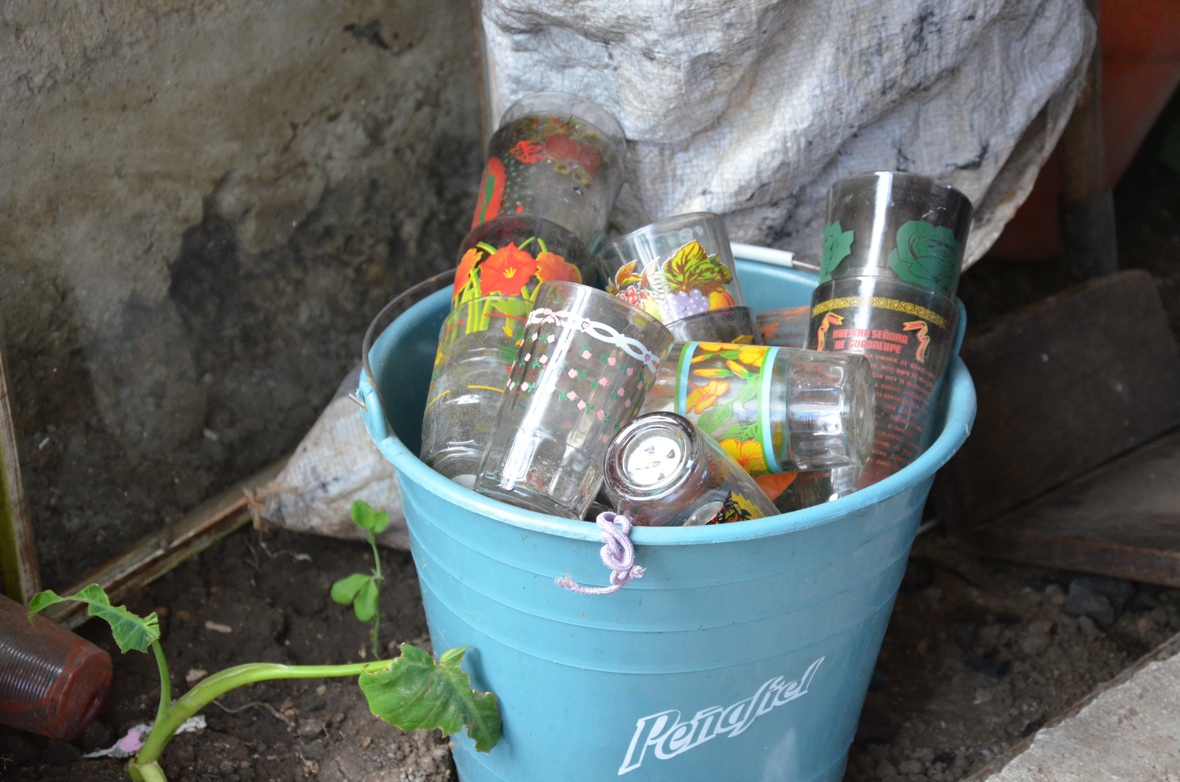
I loved seeing evidence of ordinary life being lived. Here, as in Moss Cottage, there are dishes to be washed.
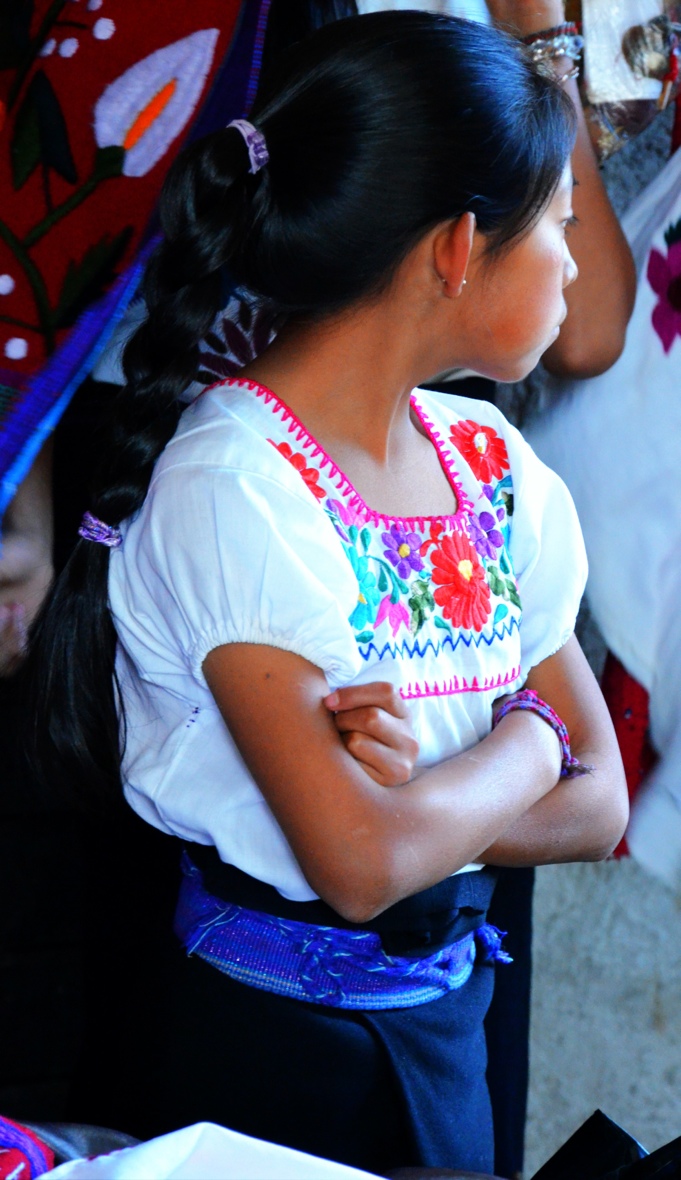
The Zinacantecan women wear completely different clothing. different colors, and no black furry skirts. Theirs are made of cotton. Both groups of women NEVER cut their hair. I saw many women with large buns nearly on their foreheads. They wear it this way after it is washed so their backs don't get wet or cold.
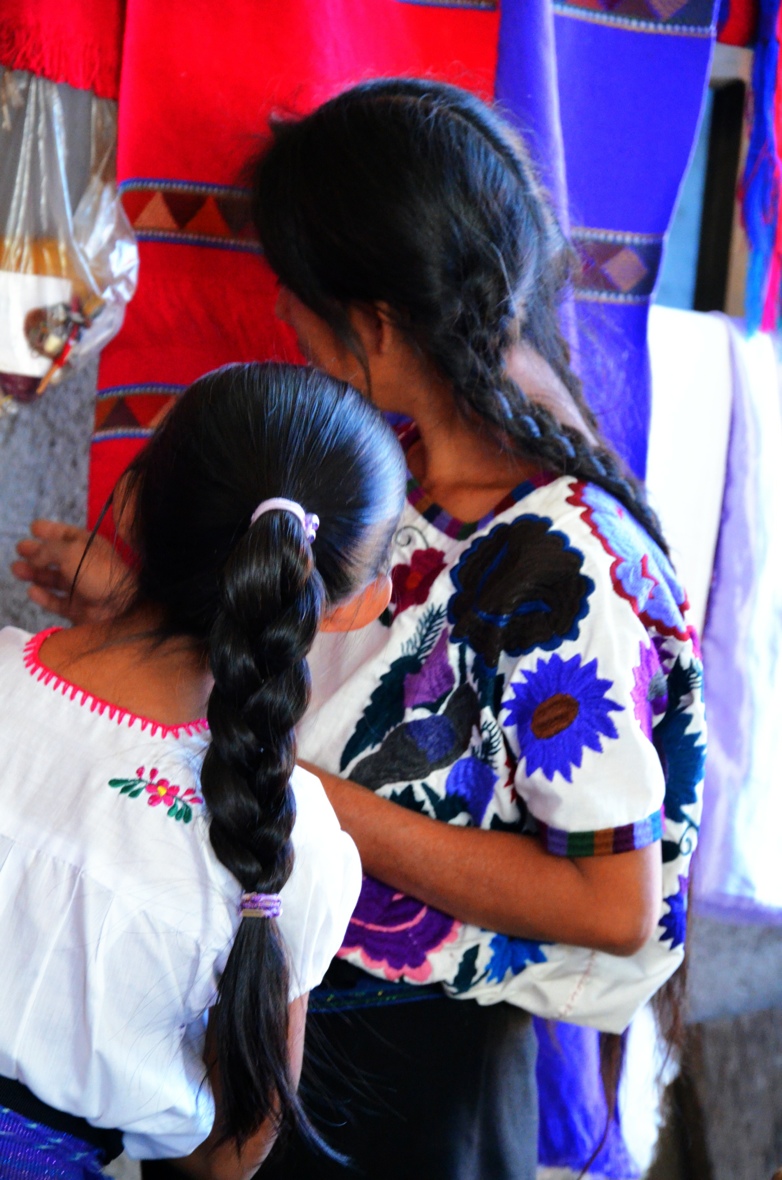
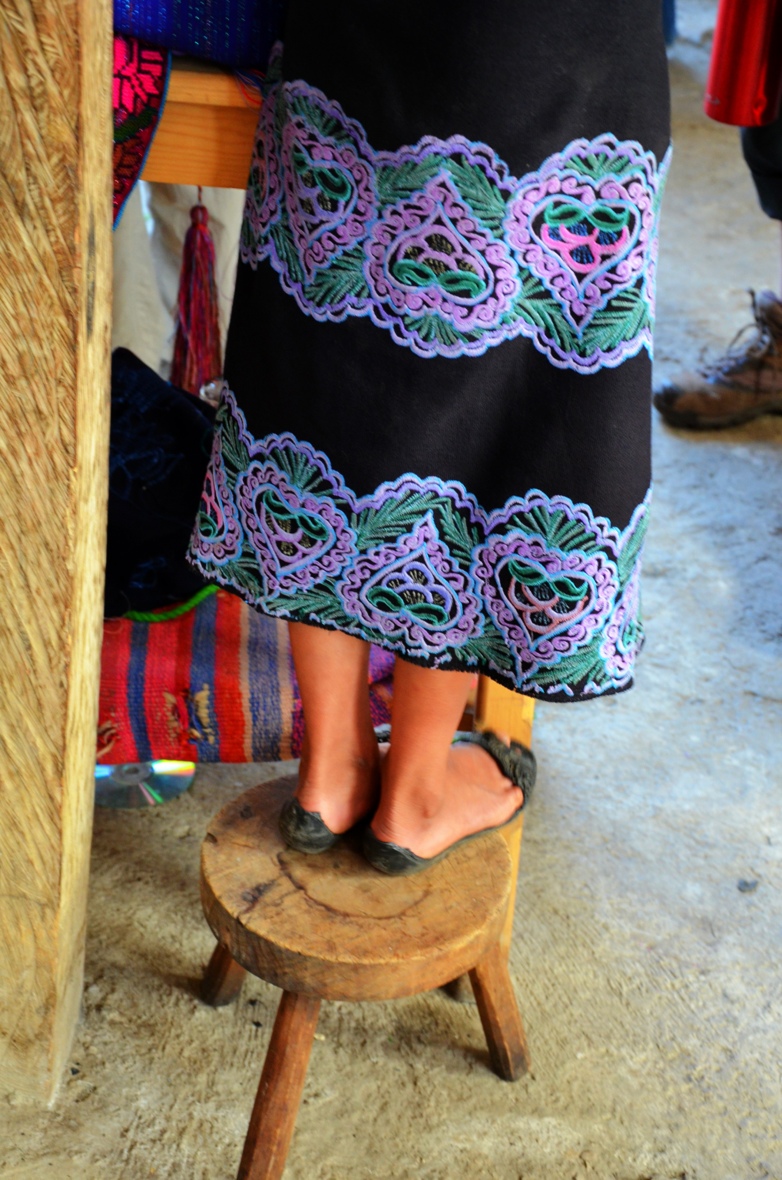
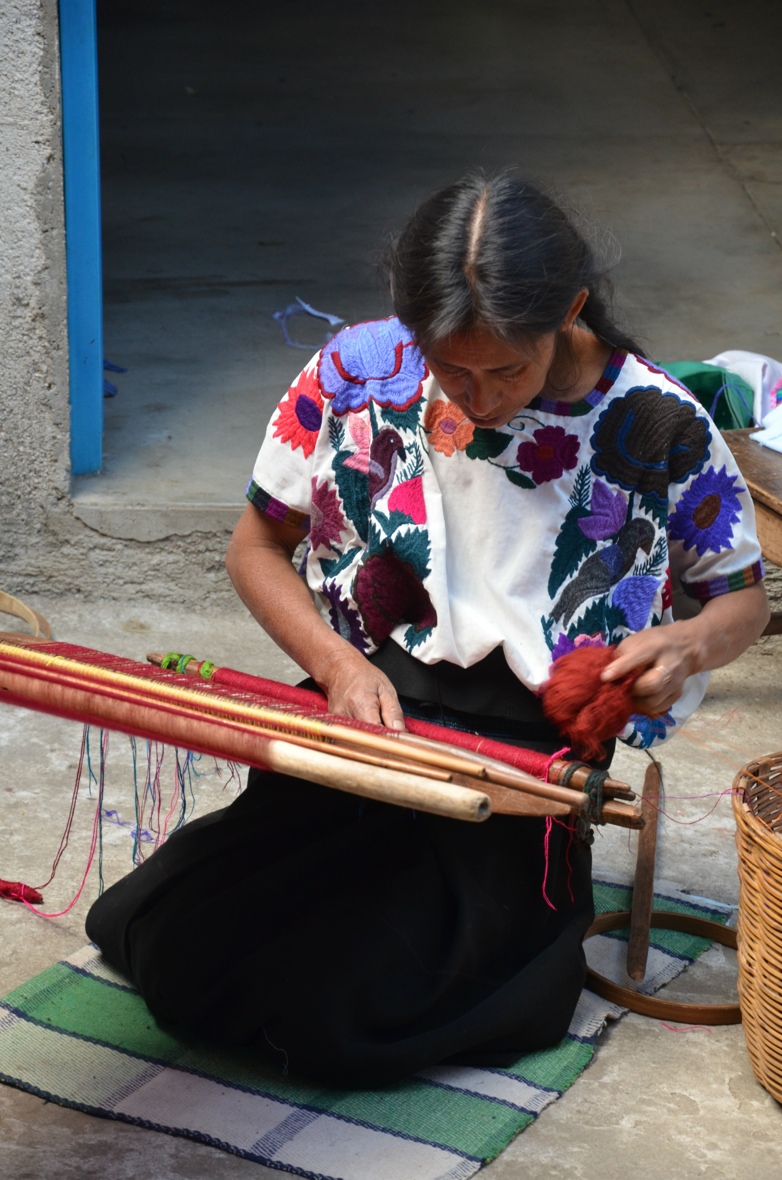
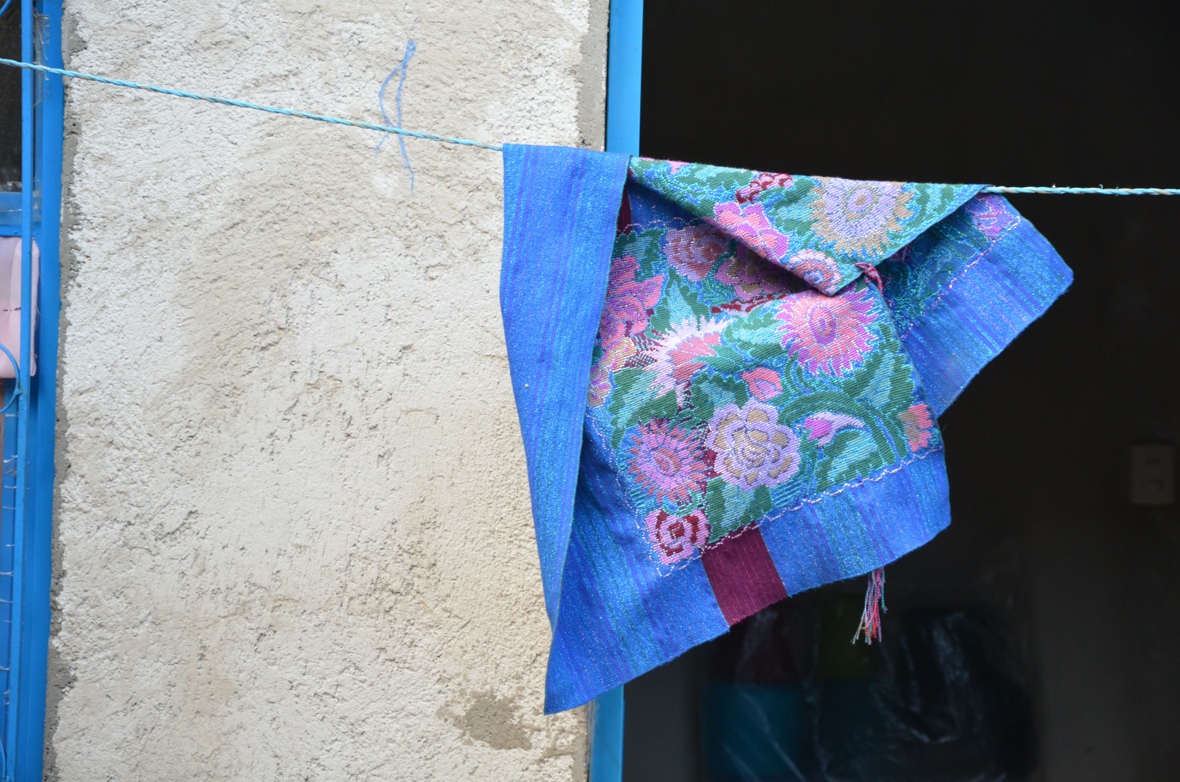
I spied this gorgeous handmade shawl casually tossed over a clothesline. These are part of the womens' daily dress when they leave their houses. A trained eye can tell which tribe of indigenous people the women belong to by noting their clothing. Cesar told us that this sameness in dress keeps the tribal identity intact. There is a sense that everyone belongs to one another. What is done to one is done to all. Members of both groups are expelled from the community if they join one of the Mormon, Jehovah Witness, or Protestant churches which come to this area to evangelize.
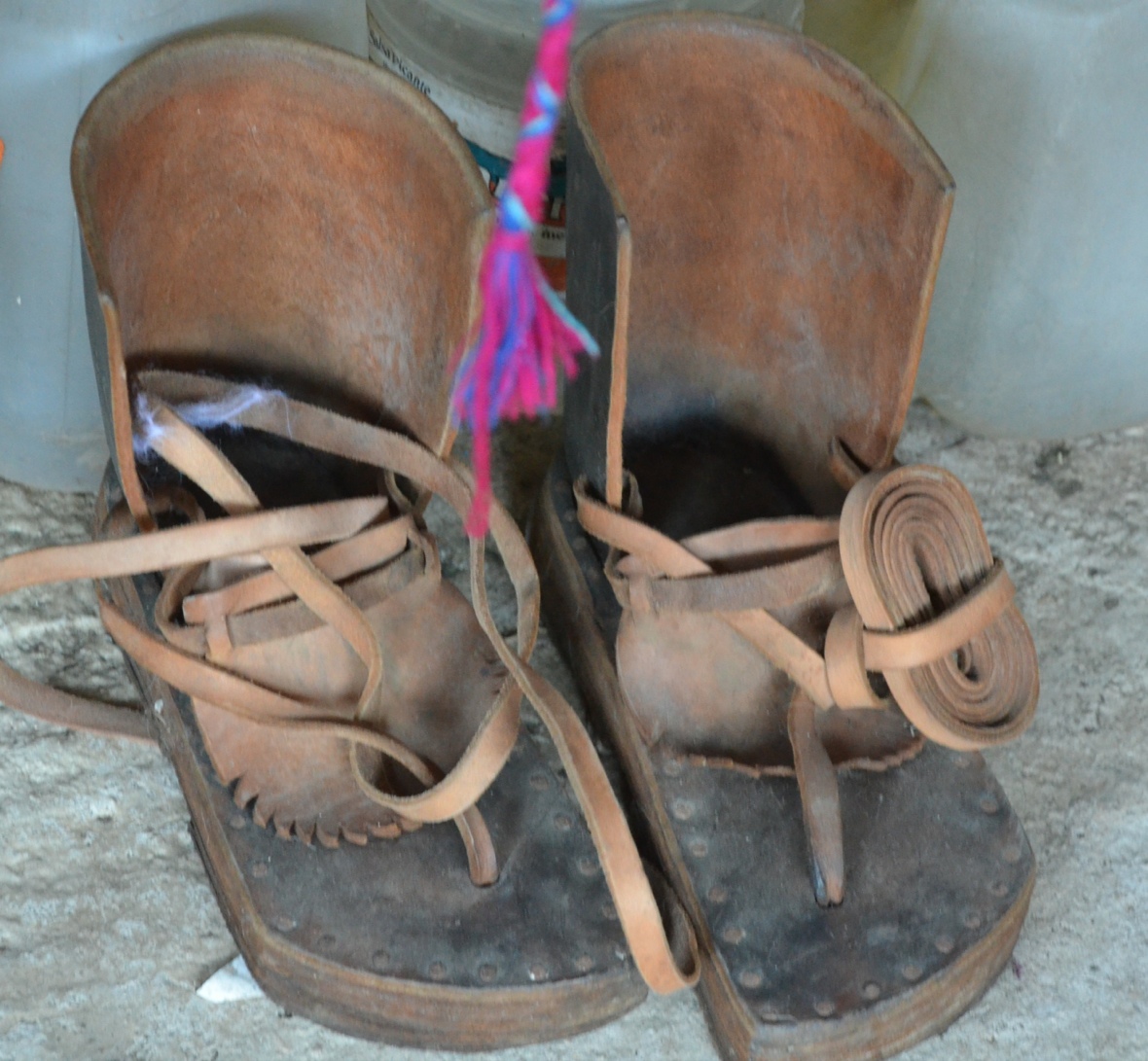

The men of both groups of indigenous Tzotzil also wear different clothes. The hat below is worn by men.

Here in Zinacatan I saw many greenhouses spread across their small valley. They grow many flowers both for income and rituals.
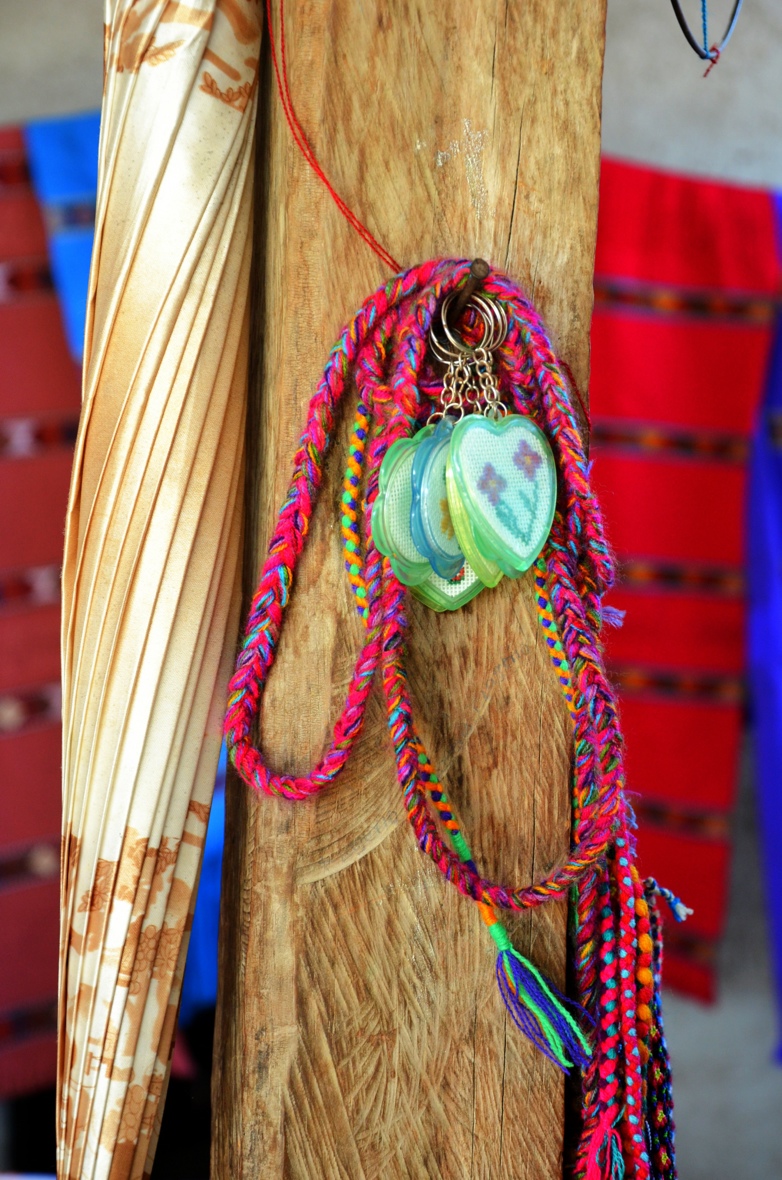
"Thus, the Tzotzil town of Zinacantan is surrounded by seven 'bathing places' of mountain-dwelling ancestors, with one of these sacred waterholes serving as the residence of the ancestors' 'nursemaids and laundresses'.[1]As in the pre-Hispanic past, an important part of ritual takes place in or near such landmarks, in Yucatán also around karstic sinkholes (cenotes)."
I am so deeply fascinated by what I am learning. I want to devour every book ( there are so many!) in my casita on Mayan culture when I arrive home for my mid-day siesta.
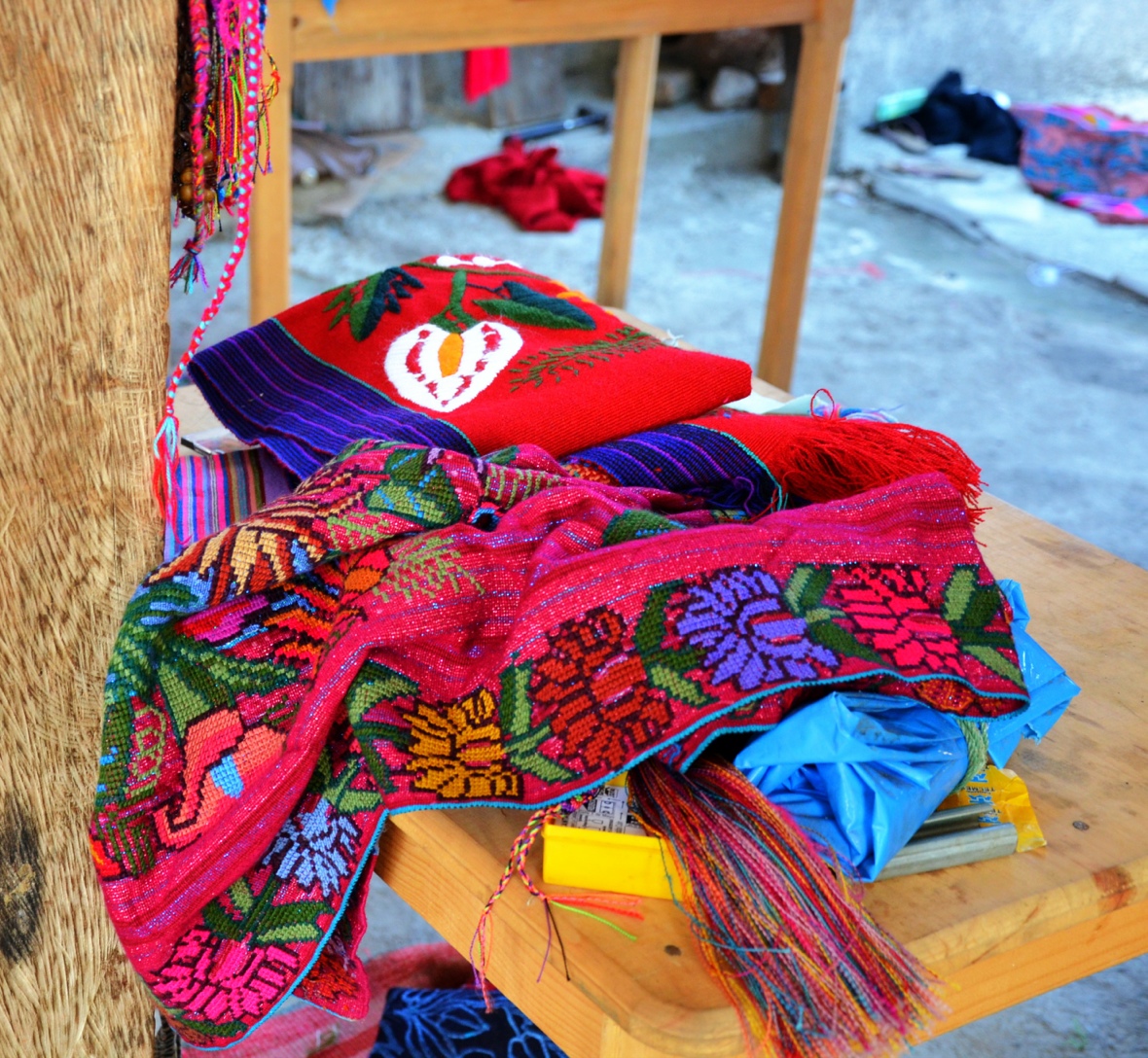
Other worlds. Other lives.
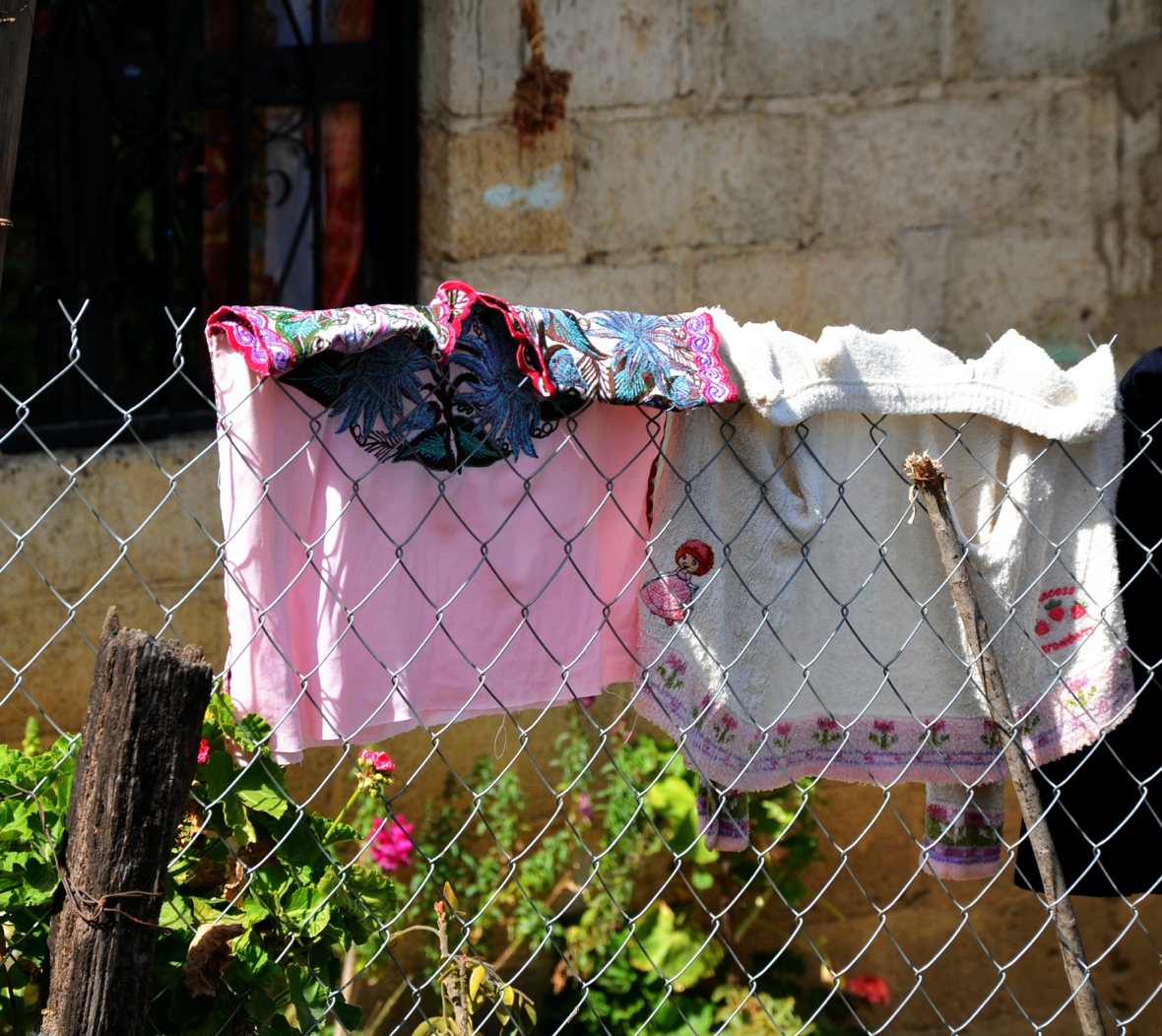
Cesar, our guide pointed out that polytheistic people are much more tolerant of people's differences than monotheistic. He was referring to all of the evangelizers who have come into Chiapas, both past and present, with intentions of knocking some religious sense into the indigenous people. He also shared that many fundamentalist christian groups continue to come to these areas to "help", but it seems like many have an agenda related to CHANGING those pesky & resistant Mayan beliefs.
Sent from my iPad
Discover more from Dispatch from LA
Subscribe to get the latest posts sent to your email.


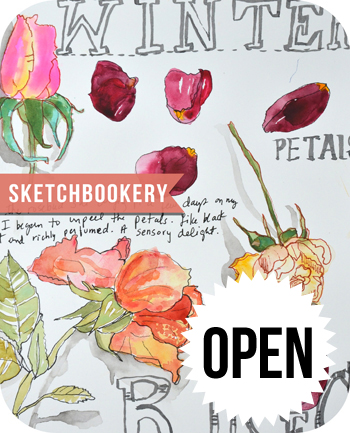
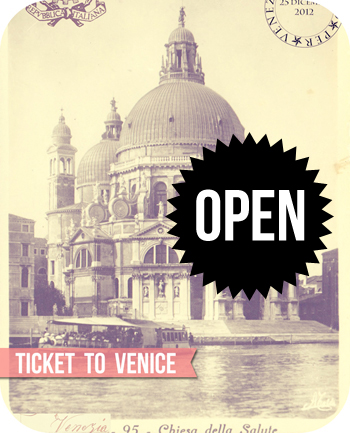
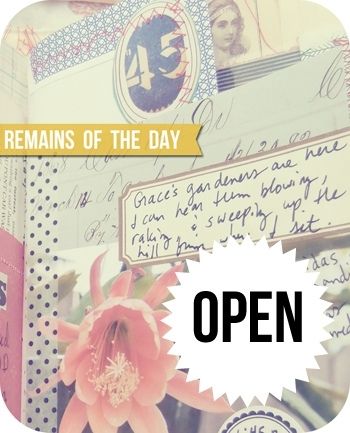

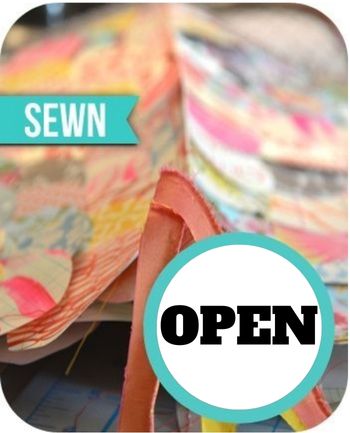

Really, really interesting (and gorgeous).
Thank you MaryAnn for once again bringing us along with you and sharing another
culture with us. You make it so interesting and the colors are fabulous!!!
Never cut their hair! Why is that? Love the textiles and clothing. What do they do for fun? How is the temperature there, doesn’t look like it is really hot. Are there many touristas?
how incredibly talented. oh the things we could all learn from them.. fascinating.
I am in awe and heartened that they have been able to maintain their culture which is not easy to do in this day and age. It’s really beautiful to know that simplicity, dedication and belief still have the power to hold people together. That being loyal and true really do matter. I am enjoying these posts so very much Mary Ann. Thank you for sharing these bits of knowledge that otherwise I’d never know.
Wowza…what an interesting and beautiful post. I was a member of the Christian church for many years and can say that the evangelizing done is usually done out of love but I do NOT believe in cramming my belief system down anyone’s throat…anymore. I believe quite differently now than I used to and find myself “shutting my mouth” more easily…but sometimes it’s hard because I want to share the wonderful gift of love. Of course…that Can be done without me saying a single word.
fascinating!! And what amazing textiles!
WOW — to everything you’ve posted thus far on your trip. The colors are magnificent. Glad you’re having such a wonderful trip. Christmas in Chiapas will be awesome, I’m sure.
So facinating!! Thanks for sharing your adventures so that we can travel vicariously through you! 😉
Lovely to see and hear of these people again! I’ve visited both of these villages and felt as you do…a delight in learning about their beautiful and interesting culture and an appreciation of their beliefs and rituals that have been held in the face of much outside pressure. I’ve also visited many Mayan villages in Guatamala and they are equally as diverse…such unique cultural treasures in a world that is becoming increasingly cross-cultural and maybe just a teensy bit “bland”. Glad to hear you’re enjoying this area and that you’ve found such a great guide…that can make such a huge difference.
I’m with Cesar all the way.